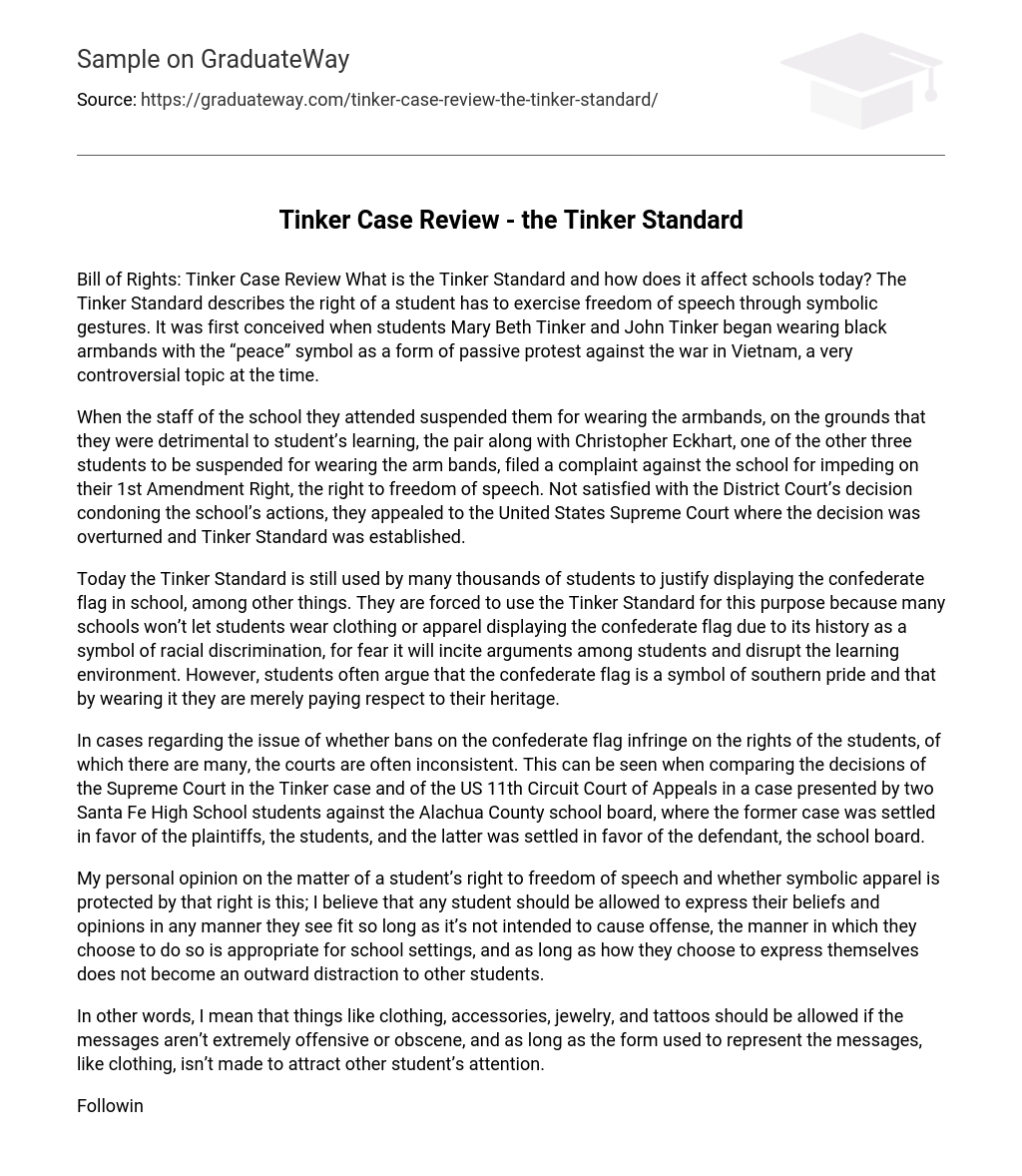Bill of Rights: Tinker Case Review What is the Tinker Standard and how does it affect schools today? The Tinker Standard describes the right of a student has to exercise freedom of speech through symbolic gestures. It was first conceived when students Mary Beth Tinker and John Tinker began wearing black armbands with the “peace” symbol as a form of passive protest against the war in Vietnam, a very controversial topic at the time.
When the staff of the school they attended suspended them for wearing the armbands, on the grounds that they were detrimental to student’s learning, the pair along with Christopher Eckhart, one of the other three students to be suspended for wearing the arm bands, filed a complaint against the school for impeding on their 1st Amendment Right, the right to freedom of speech. Not satisfied with the District Court’s decision condoning the school’s actions, they appealed to the United States Supreme Court where the decision was overturned and Tinker Standard was established.
Today the Tinker Standard is still used by many thousands of students to justify displaying the confederate flag in school, among other things. They are forced to use the Tinker Standard for this purpose because many schools won’t let students wear clothing or apparel displaying the confederate flag due to its history as a symbol of racial discrimination, for fear it will incite arguments among students and disrupt the learning environment. However, students often argue that the confederate flag is a symbol of southern pride and that by wearing it they are merely paying respect to their heritage.
In cases regarding the issue of whether bans on the confederate flag infringe on the rights of the students, of which there are many, the courts are often inconsistent. This can be seen when comparing the decisions of the Supreme Court in the Tinker case and of the US 11th Circuit Court of Appeals in a case presented by two Santa Fe High School students against the Alachua County school board, where the former case was settled in favor of the plaintiffs, the students, and the latter was settled in favor of the defendant, the school board.
My personal opinion on the matter of a student’s right to freedom of speech and whether symbolic apparel is protected by that right is this; I believe that any student should be allowed to express their beliefs and opinions in any manner they see fit so long as it’s not intended to cause offense, the manner in which they choose to do so is appropriate for school settings, and as long as how they choose to express themselves does not become an outward distraction to other students.
In other words, I mean that things like clothing, accessories, jewelry, and tattoos should be allowed if the messages aren’t extremely offensive or obscene, and as long as the form used to represent the messages, like clothing, isn’t made to attract other student’s attention.
Following this belief, symbols of expression couldn’t be banned based solely on the message they convey unless they caused sufficient disruptions, are especially or intentionally offensive, or are inappropriate in nature which would allow students to express themselves openly and, in some cases like that of the confederate flag, help reduce the stigma associated with such symbols. Resources used: —–. Document Analyzer. SAS Curriculum Pathways. http://www. sascurriculumpathways. com/portal/Launch? resource=1186. November 8, 2012.





